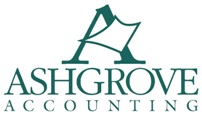A Healthy Business looks like this….
When I examine the financials statements of a business, privately held or public-traded (read: it doesn’t matter if you’re small or big), I look for the follow attributes…..
- Consistently increasing revenue – Sales don’t have to be up every year, but the long term trend should indicate consistent upward growth.
- Healthy gross margin – This is a tricky one because it’s so unique to the industry. So let’s agree that as a starting point, GM needs to be better than the industry benchmarks. Anemic gross margin could be a sign of significant competitive pressure, or lack of competitive advantage. These situations lead to cut-rate pricing or significant discounting, which is not part of a healthy business.
- S, G & A or overhead expenses that are 30-60% of gross margin. Remember that this is before interest, depreciation, and other expenses. There’s quite a range here, because some businesses are more capital intensive than others. Some businesses require constant reinvestment in equipment, facilities, tooling, etc. While other businesses, such as accounting offices, require little capital investment.
- A return on equity that is consistently moving upward. This tells me that the business is disciplined. In other words, they have the discipline to keep tamping down overhead expenses, and the foresight to actively reinvest in their business cycle.
- Little spending on R&D; and not to be confused with innovation, which is critical to the business growth cycle. The organization must maintain healthy financial results, stave off competition, and grow market share without constantly reinventing themselves, or without relying on the next break through.
Posted in: Blog
Leave a Comment (0) →
